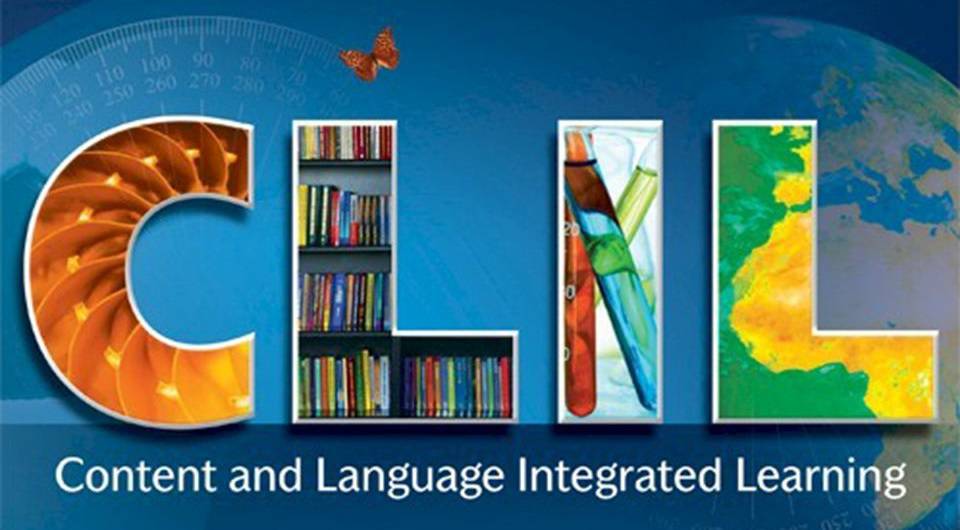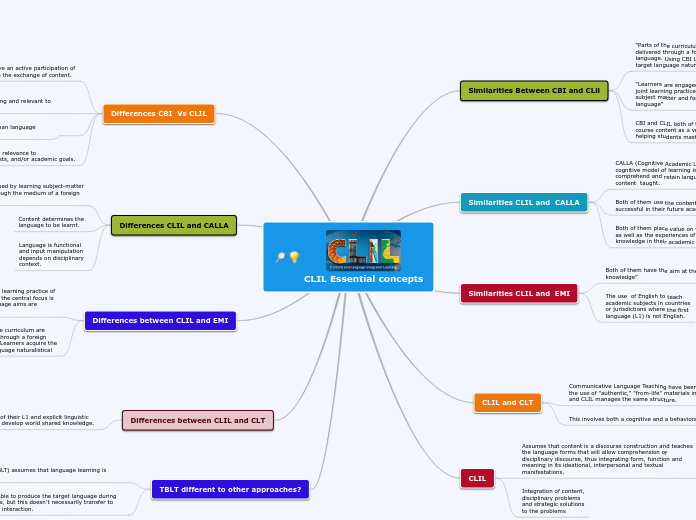
CLIL Essential concepts
Differences CBI Vs CLIL
They involve an active participation of
students in the exchange of content.
The teaching of language through
exposure to content that is interesting and relevant to learners” (Brinton, 2003, p. 201).
Base instructional decisions on content rather than language criteria
Choose content for its relevance to
students’ lives, interests, and/or academic goals.
Similarities Between CBI and CLil
“Parts of the curriculum are
delivered through a foreign
language. Using CBI Learners acquire the
target language naturalistically” (Coleman, 2006, p. 4)
“Learners are engaged in a
joint learning practice of
subject matter and foreign
language”
CBI and CLIL both of them use
course content as a vehicle for
helping students master language
Similarities CLIL and CALLA
CALLA (Cognitive Academic Language Learning Approach)The cognitive model of learning is used to help students to comprehend and retain language skills and concepts of the content taught.
Both of them use the content and skills necessary to be successful in their future academic pursuits
Both of them place value on what the student previously knew as well as the experiences of their culture, and using this knowledge in their academic learning of a new language.
Similarities CLIL and EMI
Both of them have the aim at the acquisition of subject
knowledge”
The use of English to teach
academic subjects in countries
or jurisdictions where the first
language (L1) is not English.
CLIL and CLT
Communicative Language Teaching have been denominated the use of "authentic," "from-life" materials in the classroom, and CLIL manages the same structure.
This involves both a cognitive and a behavioral aspect
CLIL
Assumes that content is a discourse construction and teaches the language forms that will allow comprehension of disciplinary discourse, thus integrating form, function and
meaning in its ideational, interpersonal and textual manifestations.
Integration of content,
disciplinary problems
and strategic solutions
to the problems
Differences CLIL and CALLA
CLIL is focused by learning subject-matter
content through the medium of a foreign
language.
Content determines the
language to be learnt.
Language is functional
and input manipulation
depends on disciplinary
context.
Differences between CLIL and EMI
While CLIL Learners are engaged in a joint learning practice of subject matter and foreign language, EMI, the central focus is on students’ content mastery and no language aims are specified.
Parts of the curriculum are
delivered through a foreign
language. Learners acquire the
target language naturalistical
Differences between CLIL and CLT
Implicit linguistic knowledge of their L1 and explicit linguistic knowledge of EFL.While CLIL develop world shared knowledge.
TBLT different to other approaches?
This approach ( TBLT) assumes that language learning is linear.
Learners may be able to produce the target language during controlled activities, but this doesn’t necessarily transfer to more spontaneous interaction.
